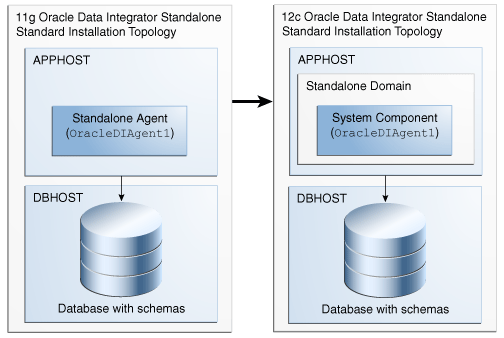Managing versions and releases in Oracle Data Integrator (ODI) involves organizing and tracking changes made to ODI artifacts, coordinating deployments, and ensuring smooth transitions between different versions of the ODI environment. Here are some best practices for managing ODI versions and releases:
- Version Control System:
- Utilize a version control system (VCS) to store and manage ODI artifacts, such as mappings, packages, and scenarios.
- Choose a VCS that integrates well with ODI, such as Git, SVN, or TFS.
- Create a repository in the VCS dedicated to storing ODI artifacts.
- Commit changes to the VCS regularly to track modifications, enable collaboration, and facilitate rollbacks if needed.
- Branching Strategy:
- Establish a branching strategy to manage different versions and releases of your ODI artifacts.
- Use branches to isolate development work, bug fixes, and new features.
- Common branching strategies include a main branch for production, development branches for ongoing work, and release branches for specific versions.
- Define guidelines for branching, merging, and resolving conflicts to ensure smooth collaboration and version control.
- Release Management Process:
- Implement a structured release management process to coordinate deployments and ensure consistency across environments.
- Define release cycles, such as major releases, minor releases, or hotfix releases, based on your project’s requirements.
- Create release notes or documentation to describe the changes, enhancements, and bug fixes included in each release.
- Establish approval workflows and testing procedures to validate releases before deployment.
- Communicate and coordinate with stakeholders, such as developers, testers, and system administrators, to ensure smooth deployment and minimal disruption.
- Environment Promotion:
- Define environments for different stages of the development lifecycle, such as development, testing, staging, and production.
- Implement controlled promotion of artifacts across environments to ensure consistency and minimize risks.
- Use deployment tools, such as ODI console, scripts, or deployment automation tools, to promote artifacts from one environment to another.
- Perform thorough testing in each environment before promoting artifacts to the next stage.
- Backup and Restore:
- Regularly back up ODI artifacts, repositories, and related configuration files to protect against data loss or corruption.
- Define a backup strategy that includes scheduled backups and periodic validation of backup integrity.
- Document the restore process and conduct periodic restore tests to ensure the ability to recover from failures or disasters.
- Change Management:
- Implement a change management process to track and control modifications to ODI artifacts.
- Use change management tools or issue tracking systems to log and manage change requests, bug reports, and enhancement requests.
- Define workflows for reviewing, approving, and implementing changes.
- Ensure proper documentation and communication of changes to all stakeholders.
- Documentation and Knowledge Sharing:
- Maintain up-to-date documentation that describes the structure, purpose, and usage of ODI artifacts.
- Document changes made during each release or version update.
- Foster knowledge sharing among team members by conducting training sessions and maintaining a centralized knowledge base.
By implementing these best practices, you can effectively manage versions and releases in ODI, ensuring proper version control, smooth deployments, and consistent environments across your development lifecycle.
SHARE
